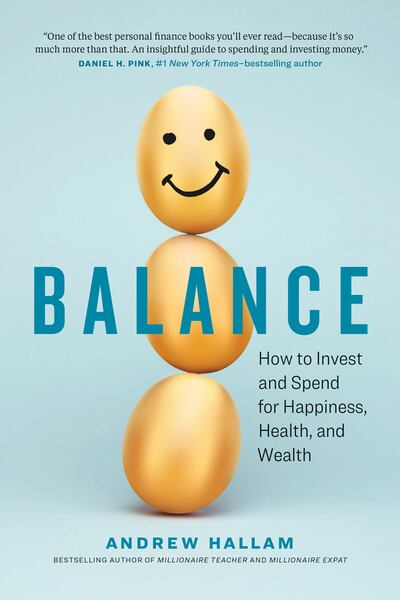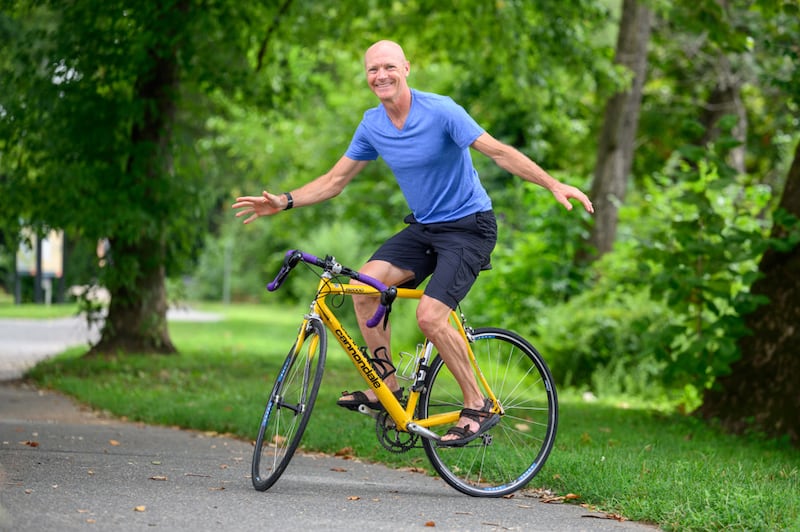This might sound morbid, but it’s true. Next month, you could get hit by a bus, struck by lightning, or collapse in a heap from a heart attack. So, why save gobs of money for a future that might not come? I get that. But if we’re going to spend money to boost our happiness, we need to do it right.
Research suggests that spending money on experiences boosts life satisfaction. In contrast, spending money on stuff (like cars) almost never does. But that might leave you asking, “Can’t a thing provide an experience?” That’s a subtlety worth considering.
In 2020, my wife and I were stuck in British Columbia, Canada, due to the Covid-19 pandemic. Granted, it’s not a bad place to be stuck. At one point, we were helping my parents find a motorhome. A salesperson at one dealership noticed we had arrived in our camper van: something we enjoyed for 17 months while exploring Mexico and Central America.
“I’m guessing you might be interested in upgrading that,” he said. Our van hadn’t come cheap. It was only a few years old and still in great condition. To his eye – and his commission-hungry pocketbook – it made sense for us to upgrade to a $170,000 Mercedes Era. It’s similar to our Winnebago Travato, but its price tag is steeper. It had a better solar power system, high-tech heating and, of course, an expensive Mercedes engine.
You might have found yourself in a similar position. You own something that provides an experience (maybe it’s a kayak, a camper van, or a bicycle) and wonder if upgrading it will enhance your experience.
In our case, I knew that a Mercedes Era van wouldn’t allow us to experience anything we couldn’t experience in our Winnebago Travato. It wouldn’t allow us to see more places, meet more friends, or embrace a wider array of cultures. It would, however, cost more money to maintain.
Most people trade time for money. They work at jobs to pay for what they need or want. Material upgrades that don’t provide new experiences (beyond the initial sugar fix) often cost more not only to buy but also to maintain. As a result, people have to work harder to pay for these things – sucking time from their lives. And time is the only non-renewable resource we have.
Unfortunately, we live in a culture of upgrades. Plenty of people upgrade their bikes, their RVs, their homes, and their cars. But we should always ask ourselves whether the upgrade would allow us to do something we couldn’t have done before.
In some cases, the answer will be yes. But often it won’t.
When I was young, I dreamed of racing in the Tour de France. I wasn’t good enough to turn professional but I still won plenty of bike races. Recently, I became reacquainted with the sport. I paid $1,000 for a used racing bike (if you’re a bike fan, it’s a carbon fibre Norco with a Shimano Dura-Ace groupset).
About seven years ago, this bike was top of the line. It weighs 16 pounds (around 7 kilograms). That’s just a single pound (less than 0.5 kilograms) heavier than the safe, minimum weight requirement for bikes in the Tour de France.
If I were young enough and good enough to be knocking on the door of the Olympic team, that single pound might make a difference. But as a 50-year-old guy without a time machine, a new and lighter bike won’t provide me with a new experience. If I can’t keep up with my friends on a 16-pound bike, I won’t keep up on a 15-pound bike either.
Sometimes, though, spending more money on something can enhance the experience, especially if it’s a big part of your life.
When I was in my 20s, I enjoyed cycling with a friend who was 10 years older. He still loves to ride his bike. But he struggles with his health, so we rarely ride together. When he was healthy enough to ride, he was too self-conscious to ride with me. He worried that he would slow me down and I wouldn’t enjoy the ride.
Recently, however, he bought an e-bike. It wasn’t cheap. But as a result of that purchase, he can now ride with his friends again, enjoy their company, and … when he chooses to, leave us in his wake.
So here’s how to test whether a purchase might provide an experience that boosts your happiness or well-being. Ask yourself if it creates experiences you wouldn’t otherwise have. A new phone, purse, brand-name clothes, or car likely wouldn’t do it, simply because of hedonic adaptation.
Plenty of upgraded purchases (like a new racing bike for me) wouldn’t provide more than a short-term boost. If a thing could improve your experience and you would use it a lot (like my friend’s e-bike), purchasing the item makes sense. But be ruthless when assessing how much you’ll use your “thing”.
Most people with boats, for example, don’t use them much. But they cost a lot to buy and maintain. So, if you’ll only use a boat for two weeks a year, rent one instead. You’ll enjoy the same experience at a fraction of the cost. That applies to many of the things you might want to buy but could rent instead, such as a tuxedo, wedding dress, or prom dress (unless you can alter and repurpose them).
For other things, I recommend the desert island litmus test.

The Desert Island Litmus Test
When Rob Fooks was a boy, he dreamed of owning a Porsche 911. When he became a lawyer, he was one step closer to achieving that dream. But unlike many young, high-salaried professionals, he refused to add additional debts to his student loans. Instead, he decided to wait.
He built his career, paid off his student loans, and saved enough money to buy his Porsche. He ordered the car and waited. But here’s where the story takes a twist. When the sales rep finally called Rob to announce that his car had arrived, Rob didn’t jump to pick it up. A few days later, the dealer called again. Still Rob stayed home. When the dealer called a third time, Rob did nothing. More than one week after the dealer’s first call, Rob’s wife, Tana, said, “Rob, the dealership called again. You need to get that car.”
The Porsche was exactly what he wanted, a charcoal gray C4S Cabriolet. But when Rob finally arrived to pick it up, the salesperson noticed his lack of excitement. The dealer asked if there was a problem. “Don’t worry,” Tana said. “He loves the car. It’s just him.”
Rob parked the car in his garage and only drove it once or twice during the first two months. Recalling his favorite drive, he says, “The first time I really enjoyed the Porsche was on a long highway drive to British Columbia. I was alone with the car and I knew nobody was watching me. I know this sounds strange, but I felt a bit embarrassed to drive it.”
Rob kept the car for several years but drove it less and less. “I saw the car more as an obligation and liability than a source of accomplishment or enjoyment, so I decided to get rid of it,” he says.
This sounds like a midlife crisis in reverse. But many of us have complicated relationships with things we buy and own. If Rob lived on a desert island filled with winding mountain roads, he might have driven that Porsche every day. After all, he didn’t buy it as a status symbol. Instead, he didn’t want anyone to see him behind the wheel.
When we’re considering a high-status item, we should ask ourselves if we would still buy it if nobody else could ever see it. In Rob’s case, the answer would have been yes. He would have bought – and kept – the Porsche. But I suspect that in most other cases, the answer would be no. Plenty of people buy high-status items to be seen having them, at least in part.
My wife and I recently met a woman named Deanne while we were mountain biking. As I pedalled behind her up a series of switchbacks, the athletic mother of two chatted about Covid-19. “It has one silver lining,” she said. “It forced me to slow down and reflect on what’s important.”
Before the pandemic, she spent plenty of time shopping for things she didn’t need. I mentioned my desert island litmus test for high-status purchases.
“That’s interesting,” she said. “I bought a Tesla Model S a couple of months ago. And if I’m really honest with myself, I don’t think I would have bought it if nobody else could see it. I would have still bought an electric car if I lived on a desert island. But it would have been smaller and more modest.” This is worth thinking about when you’re buying or upgrading a home, too.
If nobody could ever see your home, would you still buy it or spend money on the upgrade? Our friends and family aren’t going to love us any more or any less if we choose to buy a mansion on a hill, rent a swanky apartment, or update our living room.
That’s why the desert island question is a soul-searching litmus test. If you would still buy a bigger home or renovate your home if nobody outside your live-in family could ever see it, then go for it. But be honest with yourself. Ask yourself if these changes will enhance your overall life satisfaction. In most cases, they won’t.
The New York Times referenced a German study where researchers tracked thousands of people in Germany who upgraded to different homes between 1991 and 2007. Five years after each person had bought their new home, the researchers asked them if the new homes had increased their overall levels of happiness.
Overwhelmingly, respondents answered that it hadn’t. A Michigan State University study revealed the same thing about cars. People who owned expensive cars didn’t enjoy their driving experiences any more than people who owned modest cars. They simply got used to what they owned.
The stuff we buy rarely makes us happier. More often, it actually has the opposite effect, whetting our appetites for even more because, for some reason, we think bigger, fancier, or newer things will make us happier. And if we borrow money to buy stuff, that can compound our misery.
This is why, instead of buying more, or “better,” stuff, consider spending your money on experiences. You might choose to take dancing, guitar, or cooking lessons. Perhaps you’ll travel somewhere and learn a foreign language. Or maybe you’ll save enough money to take some time away from work. It could be a sabbatical you spend with your family, exploring the country or enjoying a series of activities together. After all, the most important key to living well is having good relationships.
Andrew Hallam is the international best-selling author of Millionaire Teacher and Millionaire Expat. The former teacher has been investing since he was a teenager and became a millionaire at the age of 37 by investing in low-cost exchange-traded funds. Balance: How to Invest and Spend for Happiness, Health and Wealth is available on Amazon.






